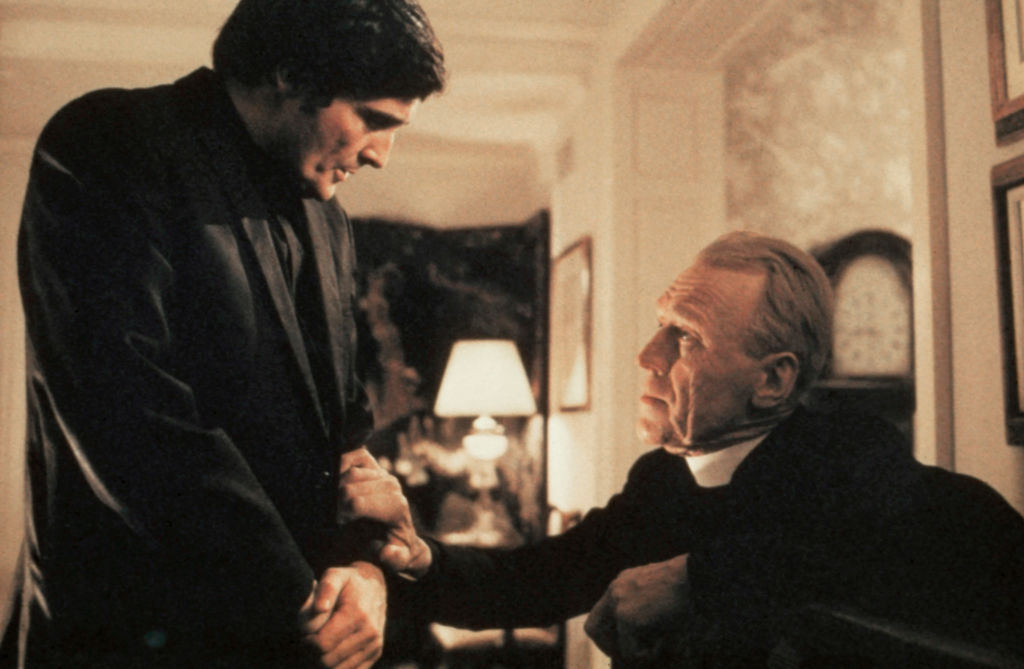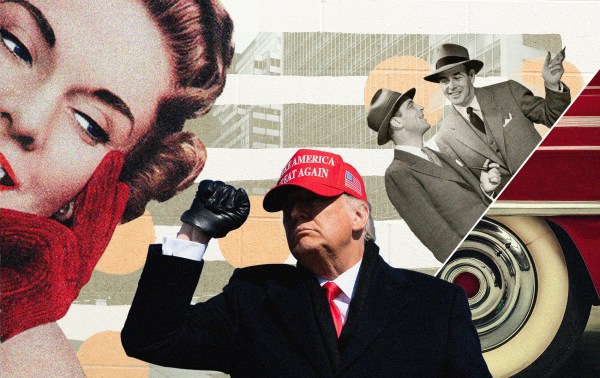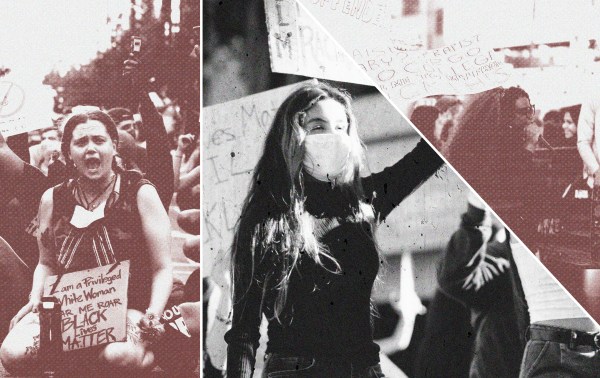“It’s mostly guys who faint.”
Released 50 years ago in late 1973, The Exorcist had been out for less than a week when theater employees began stockpiling smelling salts for the fainters. A law student at Northeastern told The Boston Globe that four people passed out during a single showing, including a policeman. On the other side of the country, a California theater manager complained: “My janitors are going crazy wiping up the vomit.”
The Exorcist immediately struck a chord in the culture. The line outside Sack 57 Theater in Boston stretched along Park Square. Critics called it “elegant occultist claptrap” and “spectacular nonsense,” while acknowledging its performances and affirming its deep aftereffects. And it wasn’t just audiences and critics who had thoughts: A well-known psychiatrist called the movie “a menace to the mental health of our community,” and a Jesuit psychologist from Georgetown remarked, “You can’t bring people to God by scaring them to death.”
Three months after director William Friedkin began shooting the film, Pope Paul VI affirmed that “one of the Church’s greatest needs is to be defended against the evil we call the Devil.” The pontiff cautioned that the faithful avoid treating the “malign, clever seducer” as merely “a conceptual, fanciful personification of the unknown causes of our misfortunes.”
The film certainly doesn’t treat evil as fanciful, but rather as a torrid panoply of the profane. Many moments in it can make us feel truly dirty, like the demon’s crude language arriving through the mouth of a child, making her outbursts and violence all the more shocking. It’s a shame that somewhere in the half century between its release and its anniversary, we have lost a sense of cinematic chagrin. In the face of shock, we now often smirk when we should be gasping.
A more careful viewing of The Exorcist, however, reveals that it’s a deeply spiritual film, one that takes the sacred seriously. The central conceit of the movie is not whether God objectively exists—I’m not sure Friedkin was certain, either way—but what God’s existence means to believers. In order to enjoy a horror film, we must suspend our disbelief. In order to enter the world of its story, we must believe, and in doing so embrace a vulnerability that’s necessary for true faith.
In one pivotal scene, Fr. Damien Karras (Jason Miller) and Fr. Lankester Merrin (Max von Sydow), the two exorcists, are exhausted. The demon is wearing them down, exposing their weaknesses. The priests exit the possessed child’s bedroom and sit on the hallway staircase, their black vestments contrasting the eerie blues and whites of the home. Fr. Karras asks the older priest why the demon would possess and punish a young girl. Fr. Merrin responds: “I think the point is to make us despair. To see ourselves as animal and ugly. To make us reject the possibility that God could love us.” For all of its violence and vulgarities, The Exorcist is a film about exactly that: the possibility that God could love us.
The great religious writers of the past century—Graham Greene and Flannery O’Connor among them—realized the porous border between the sacred and the profane. Sin is near us all, and it should make us flinch.
William Peter Blatty, who adapted the film’s screenplay from his own novel, probably appreciated the sentiment. Born in 1928, Blatty was educated by Jesuits at Brooklyn Preparatory and then at Georgetown University, where, during a theology course taught by Fr. Eugene Gallagher, he learned of the exorcism case that inspired the film. When Blatty decided to turn the real case into a story 20 years later, his old professor introduced him to Fr. William Bowdern, who performed the exorcism. Blatty called his ensuing novel “a 350-page-thank-you-note to the Jesuits” for his education.
Although he would become famous for his horror classic, Blatty was a satirist at heart. A writer of comedies and farces, he had a distinctly Catholic tendency to meld the tragic with the comic. (While at Georgetown, he posed as an Augustinian priest and kidnapped Villanova’s mascot, a wildcat.) “There is no such thing as a moderate success with humor and no such thing as a moderate failure,” Blatty once said. “When you fail you fall on your face.” Even early in his literary career, he previewed his future plans: “Humor is one form of release, perhaps the best. But vicarious horror is a release, too.”
The film is a release, no doubt. My wife and I both watched The Exorcist far younger than the suggested viewing age, perhaps a rite of spiritual passage in Hispanic and Italian homes. The visceral and violent moments stay with me, but even sharper are the poetic moments among the profane. The nuns walking gracefully down the street, their habits fluttering in the breeze; the charged early conversation between Chris MacNeil (Ellen Burstyn) and Fr. Karras; and Fr. Karras’ ascension up the Hell’s Kitchen stairs to his mother’s apartment—he enters as a priest, removes his black shirt and white collar, and returns to his identity as a son. Friedkin was masterful at creating those tense yet transcendent moments.
The Exorcist survives and scares 50 years later both because it is theologically robust and because it makes the strange domestic. Perhaps surprisingly, Blatty didn’t consider it a horror movie; he wanted to make the film, in his words, “as realistic as possible.” “No one gives a histrionic performance out of keeping with human behavior,” he added. Friedkin, for his part, remarked that “after all I’ve seen [working] on this film I definitely believe in demonic possession … It seems strange, foreign, and impossible, but it exists.”




Please note that we at The Dispatch hold ourselves, our work, and our commenters to a higher standard than other places on the internet. We welcome comments that foster genuine debate or discussion—including comments critical of us or our work—but responses that include ad hominem attacks on fellow Dispatch members or are intended to stoke fear and anger may be moderated.
With your membership, you only have the ability to comment on The Morning Dispatch articles. Consider upgrading to join the conversation everywhere.